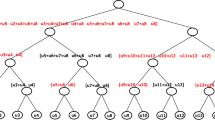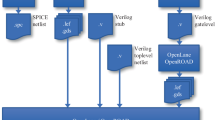Abstract
An interesting area of application in wireless data communication is direct-sequence spread spectrum (DSSS). Spread spectrum communication techniques make the signals more robust against interference and jamming. These are based on a concept that narrowband signal is scrambled before transmission in such a way that the signals occupy a much larger part of the radio frequency spectrum. As the digital and the analogue system components are required on the same substrate in today’s mixed-signal chips, the DSSS transmitter system is proposed to be implemented in field-programmable gate array (FPGA)–based platforms and application-specific integrated circuits (ASICs). With a low-power very large-scale integration (VLSI) architecture, sophisticated processing of wide-bandwidth DSSS systems can be exploited in FPGAs/ASICs. In this article, binary pseudo-noise (PN) sequences are generated using a low-power linear feedback shift register (LFSR) in order to spread transmit signals extensively. The proposed low-power design of LFSR and DSSS transmitter with implementation results is illustrated in this paper. Dynamic power dissipation of the proposed DSSS transmitter is reduced up to 15% and 15.6% when compared to the conventional LFSR and the Gold code–based systems respectively. The proposed hardware is implemented in 180-nm technology and operates at 15.36-MHz frequency.











Similar content being viewed by others
References
Dixon RC (1995) Spread spectrum systems with commercial applications,3rd edition. John Wiley & Sons, Inc., New York
Lindenmeier S, Terzis A (2003) A DSSS-based wireless short range data-link. AEU Int J Electron Commun 57(3):161–167
Proakis JG (1995) Digital communications, 3rd edn. McGraw-Hill, Boston
Heidari-Bateni G, Mc-Gillem CD. (1992).Chaotic sequences for spread spectrum: an alternative to PN sequences. Proc. IEEE ICWC , 437- 440.
Cottatellucci L, Muller RR, Debbah M (2010) Asynchronous CDMA system with random spreading – Part I : fundamental limits. IEEE Trans Inf Theory 56(4):1477–1497
Boukadourn M, Tabari K, Bensaoula A, Starikov D, Aboulhanid EM (2005) FPGA implementation of a CDMA source coding and modulation subsystem for a multiband fluorometer with pattern recognition capabilities. IEEE Int Symp Circ Syst 5:4767–4770
Do GL, Feher K (1996) Efficient filter design for IS-95 CDMA systems. IEEE Trans Consum Electron 42(4):1011–1020
Guo U, McCain D and Cavallaro JR. Low complexity system-on-chip architecture of parallel-residue compensation in CDMA systems, IEEE Int Symp Circuits and Syst 77 – 80
Correal NS, Buehrer RM, Woerner BD (1999) A DSP-based DS-CDMA multiuser receiver employing partial parallel inference cancellation. IEEE J Select Areas Commun 17(4):613–630
Erseghe T, Cipriano AM (2011) Maximum likelihood frequency offset estimation in multiple access time- hopping UWB. IEEE Trans Wirel Commun 10(7):2040–2045
Chern S-J and Cheng M-K. (2010) New ST-BC MIMO-CDMA transceiver with augmented user signatures. IEEE Int Symp Intelligent Signal Process Commun Syst 1-4.
Hussain H, Mohd M, Rahman LF, Reaz MBI, Rosly HNB (2004) Design of low power linear feedback shift register. J Theor Appl Inf Technol 61(2):326–333
Mariyappan P (2014) A design and analysis of low power linear feedback shift register with clock gating. Int J Innov Res Sci Eng Technol 3(9):16381–16385
Parhi KK, Ayinala M (2010) Efficient parallel VLSI architecture for linear feedback shift registers’. Department of Electrical and Computer Engineering University of Minnesota, Minneapolis, pp 52–57
Parhi KK, Ayinala M (2011) High-speed parallel architectures for linear feedback shift registers. IEEE Trans Signal Process 59(9):4459–4469
Bazil Raj, AA, Muthiah, D.(2012) Implementation of high-speed LFSR design with parallel architectures. Int Conf Comp Commun Appl 1-6.
Subhra M, Tannishtha S (2012) Data encryption with linear feedback shift register. Int J Sci Eng Res 3(6):1–8
Logofatu D (2018) Static test compaction for VLSI tests: an evolutionary approach. Adv Electr Comp Eng 8:2
Oleg B, Maksim R (2014) Pipelined error-detecting codes in FPGA testing. Adv Electr Comp Eng 14(2):57–62
Özcanhan MH, Unluturk MS, Dalkilic G (2016) An ultra-light PRNG passing strict randomness tests and suitable for low cost tags. Adv Electr Comp Eng 16(3):81–90
Chiper DF, Cracan A, Burdia D (2017) A new systolic array algorithm and architecture for the VLSI implementation of IDST based on a pseudo-band correlation structure. Adv Electr Comp Eng 17(18):75–80
Ranjith J, Muniraj (2016) Jammer suppression in spread spectrum communication using novel independent component analysis approach. AEU Int J Electron Commun 70(8):998–1005
Sarojini R, Rambabu CH (2012) Design and implementation of DSSS-CDMA transmitter and receiver for reconfigurable links using FPGA. Int J Recent Technol Eng (IJRTE) 1(3):169–174
Author information
Authors and Affiliations
Corresponding author
Additional information
Publisher’s note
Springer Nature remains neutral with regard to jurisdictional claims in published maps and institutional affiliations.
Rights and permissions
About this article
Cite this article
Jayasanthi, M., Kalaivani, R. Low-power DSSS transmitter and its VLSI implementation. Ann. Telecommun. 76, 537–543 (2021). https://doi.org/10.1007/s12243-021-00837-z
Received:
Accepted:
Published:
Issue Date:
DOI: https://doi.org/10.1007/s12243-021-00837-z




